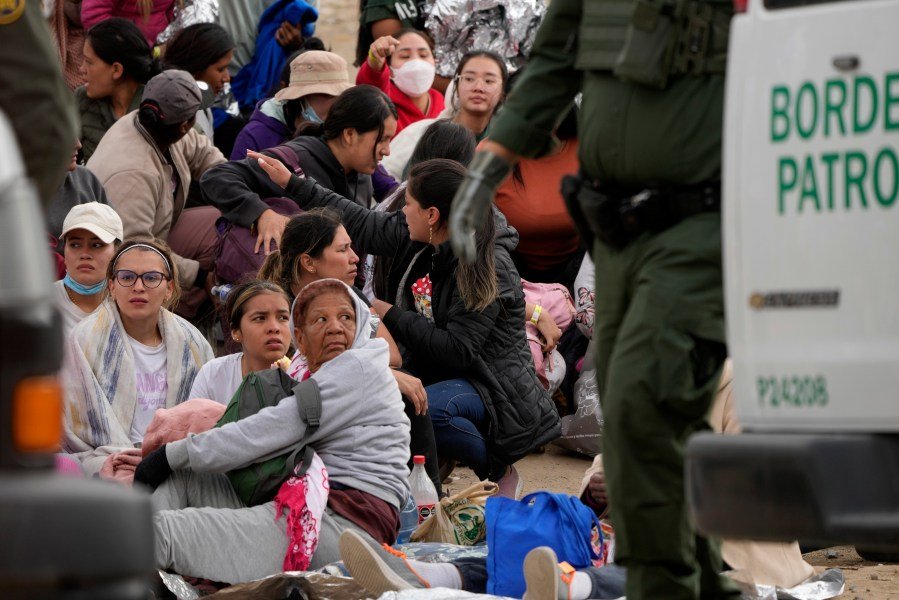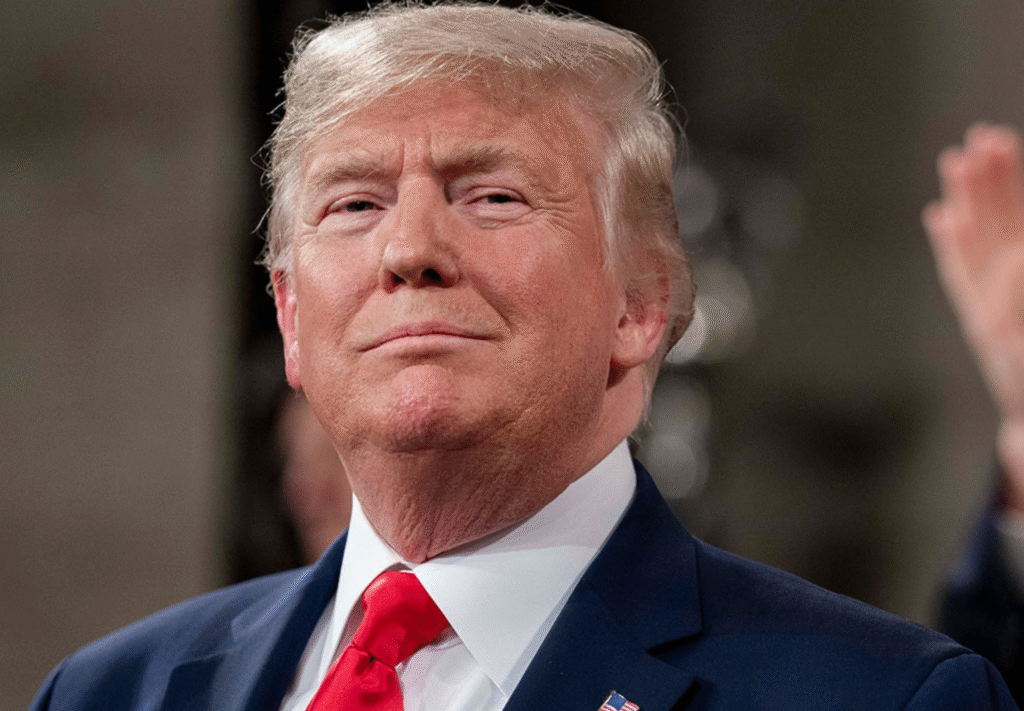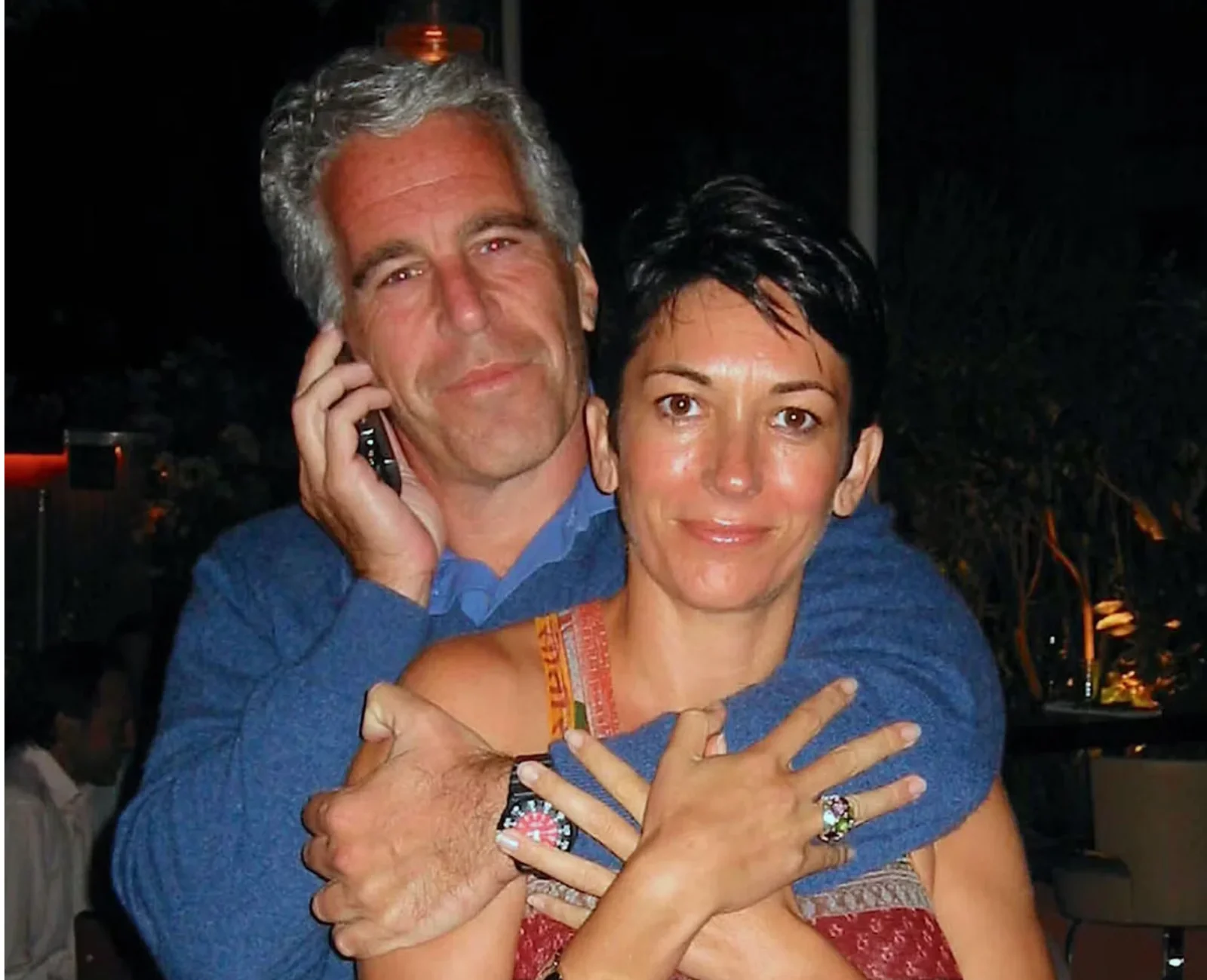World News
Children separated at US-Mexico border had ‘no interaction’ with their parents: report on September 18, 2023 at 9:26 pm

Migrant children who were separated from their parents at the southern border were not informed by U.S. officials of their right to interact with family members, resulting in increased trauma from detention, according to an official report filed in court last week.
According to the report, Customs and Border Protection (CBP) officials at times separated children as young as 8 from their parents, often without informing the parties of their right to interact with each other.
The report was filed Friday in the U.S. District Court for Central California by Paul Wise, a professor of child health and pediatrics at Stanford University, the court-appointed Juvenile Child Monitor overseeing implementation of the Flores settlement agreement, a key court resolution governing detention standards for migrant minors.
“None of the interviewed children had visited with their parents since they were separated, including children who had been separated for 4 days. Most of the children were not aware of any protocols that would allow them to request a visit with their parents,” wrote Wise in the filing.
Caregivers assigned to the children were also largely unaware of the detainees’ visitation rights, according to the report.
The report, concerning conditions for migrant minors in just two sectors of the border, Rio Grande Valley and El Paso, heightened concerns among advocates.
“U.S. Border Patrol’s continued practice of family separation as detailed in this report is deeply troubling. It confirms that CBP continues to violate children’s rights to safety and family unity, despite the traumatic and long-lasting consequences of separating children,” said Gladis Molina, executive director at the Young Center for Immigrant Children’s Rights.
“The fact that Dr. Wise’s report focuses on just one part of the border gives us reason to be concerned that forced family separation is even more widespread than we know.”
According to the Flores settlement, minors may not be held in immigration detention for more than 72 hours in most cases, a rule that CBP largely followed for unaccompanied minors, but less so for family units.
CBP did not respond to a request for comment on this story.
In July, 737 minors traveling as part of family units were subject to longer-than-usual detention; 697 were held for three to five days, 39 for more than five days, including 15 who were held more than 14 days.
That’s a sharp increase from June, when 187 minors were held for periods longer than three days, and none for more than 14 days.
Few unaccompanied children were held for long periods. No unaccompanied minors were held longer than three days in June, and five were held in July, including only one minor held more than 14 days.
“When the 72-hour limit is surpassed, it is almost always due to special circumstances, such as a child initially reporting that they are over 18 years old or for a protracted medical issue,” wrote Wise.
“Children in families, however, are routinely held for more than 72 hours.”
Wise cited site visits to the Donna Facility in the Rio Grande Valley of Texas, a temporary holding facility run by CBP, where investigators found that some children had been separated from their parents.
The separated children included young boys separated from fathers and young girls from mothers, an apparent violation of the terms of the Flores settlement.
However, the report noted that some family separations are routine, for instance placing older teenage boys among other boys, rather than in family holding facilities.
“This is done so that teenage boys are not held in the same pods with large numbers of what are often, very young women,” wrote Wise.
Children can also be separated from their parents if officials believe the parents are a risk to the welfare of the children.
Those exceptions are not clearly delineated in the settlement, and medical professionals such as Wise say forced family separation comes with intrinsic risks.
“The essential context for these Settlement provisions and their legal assessment is the fundamental understanding that hold a child separately while in custody is bad for children. Separating a child from a parent can be profoundly traumatic for children and can have lasting, harmful effects,” he wrote.
The report’s recommendation on the issue was simply to stop separating children younger than 16 from their parents, or at the very least inform children, parents and caretakers of family visitation rights.
Advocates say the practice has to end.
“There is simply no justification for routinely separating children from their parents at the border. If ‘overcrowding’ is truly CBP’s concern, the agency should take action to quickly process and release families together,” said Molina.
“Children seeking safety at our border require the highest standards of care. The Biden Administration must immediately address these concerns, rather than repeating the harm of the past.”
But, Wise noted, family separations while in detention under the Biden administration different from the Trump administration’s short-lived “zero tolerance” policy, which extended beyond detention.
“The separations observed in the [Rio Grande Valley] pertained only to the families’ time in custody, as parents and children were reunited upon their release from custody,” wrote Wise.
“These separations in custody, therefore, should be distinguished from the family separations associated with the ‘Zero Tolerance’ policy in 2018 in which children were separated from parents at apprehension and ultimately transferred to the Office of Refugee Resettlement, [Health and Human Services], as [Unaccompanied Children].”
Migrant children who were separated from their parents at the southern border were not informed by U.S. officials of their right to interact with family members, resulting in increased trauma from detention, according to an official report filed in court last week. According to the report, Customs and Border Protection (CBP) officials at times separated…
News
US May Completely Cut Income Tax Due to Tariff Revenue

President Donald Trump says the United States might one day get rid of federal income tax because of money the government collects from tariffs on imported goods. Tariffs are extra taxes the U.S. puts on products that come from other countries.

What Trump Is Saying
Trump has said that tariff money could become so large that it might allow the government to cut income taxes “almost completely.” He has also talked about possibly phasing out income tax over the next few years if tariff money keeps going up.
How Taxes Work Now
Right now, the federal government gets much more money from income taxes than from tariffs. Income taxes bring in trillions of dollars each year, while tariffs bring in only a small part of that total. Because of this gap, experts say tariffs would need to grow by many times to replace income tax money.
Questions From Experts
Many economists and tax experts doubt that tariffs alone could pay for the whole federal budget. They warn that very high tariffs could make many imported goods more expensive for shoppers in the United States. This could hit lower- and middle‑income families hardest, because they spend a big share of their money on everyday items.
What Congress Must Do
The president can change some tariffs, but only Congress can change or end the federal income tax. That means any real plan to remove income tax would need new laws passed by both the House of Representatives and the Senate. So far, there is no detailed law or full budget plan on this idea.

What It Means Right Now
For now, Trump’s comments are a proposal, not a change in the law. People and businesses still have to pay federal income tax under the current rules. The debate over using tariffs instead of income taxes is likely to continue among lawmakers, experts, and voters.
News
Epstein Files to Be Declassified After Trump Order

Former President Donald Trump has signed an executive order directing federal agencies to declassify all government files related to Jeffrey Epstein, the disgraced financier whose death in 2019 continues to fuel controversy and speculation.
The order, signed Wednesday at Trump’s Mar-a-Lago estate, instructs the FBI, Department of Justice, and intelligence agencies to release documents detailing Epstein’s network, finances, and alleged connections to high-profile figures. Trump described the move as “a step toward transparency and public trust,” promising that no names would be shielded from scrutiny.
“This information belongs to the American people,” Trump said in a televised statement. “For too long, powerful interests have tried to bury the truth. That ends now.”
U.S. intelligence officials confirmed that preparations for the release are already underway. According to sources familiar with the process, the first batch of documents is expected to be made public within the next 30 days, with additional releases scheduled over several months.
Reactions poured in across the political spectrum. Supporters praised the decision as a bold act of accountability, while critics alleged it was politically motivated, timed to draw attention during a volatile election season. Civil rights advocates, meanwhile, emphasized caution, warning that some records could expose private victims or ongoing legal matters.
The Epstein case, which implicated figures in politics, business, and entertainment, remains one of the most talked-about scandals of the past decade. Epstein’s connections to influential individuals—including politicians, royals, and executives—have long sparked speculation about the extent of his operations and who may have been involved.

Former federal prosecutor Lauren Fields said the release could mark a turning point in public discourse surrounding government transparency. “Regardless of political stance, this declassification has the potential to reshape how Americans view power and accountability,” Fields noted.
Officials say redactions may still occur to protect sensitive intelligence or personal information, but the intent is a near-complete disclosure. For years, critics of the government’s handling of Epstein’s case have accused agencies of concealing evidence or shielding elites from exposure. Trump’s order promises to change that narrative.
As anticipation builds, journalists, legal analysts, and online commentators are preparing for what could be one of the most consequential information releases in recent history.
Politics
Netanyahu’s UN Speech Triggers Diplomatic Walkouts and Mass Protests

What Happened at the United Nations
On Friday, Israeli Prime Minister Benjamin Netanyahu addressed the United Nations General Assembly in New York City, defending Israel’s ongoing military operations in Gaza. As he spoke, more than 100 delegates from over 50 countries stood up and left the chamber—a rare and significant diplomatic walkout. Outside the UN, thousands of protesters gathered to voice opposition to Netanyahu’s policies and call for accountability, including some who labeled him a war criminal. The protest included activists from Palestinian and Jewish groups, along with international allies.

Why Did Delegates and Protesters Walk Out?
The walkouts and protests were a response to Israel’s continued offensive in Gaza, which has resulted in widespread destruction and a significant humanitarian crisis. Many countries and individuals have accused Israel of excessive use of force, and some international prosecutors have suggested Netanyahu should face investigation by the International Criminal Court for war crimes, including claims that starvation was used as a weapon against civilians. At the same time, a record number of nations—over 150—recently recognized the State of Palestine, leaving the United States as the only permanent UN Security Council member not to join them.
International Reaction and Significance
The diplomatic walkouts and street protests demonstrate increasing global concern over the situation in Gaza and growing support for Palestinian statehood. Several world leaders, including Colombia’s President Gustavo Petro, showed visible solidarity with protesters. Petro called for international intervention and, controversially, for US troops not to follow orders he viewed as supporting ongoing conflict. The US later revoked Petro’s visa over his role in the protests, which he argued was evidence of a declining respect for international law.

Why Is This News Important?
The Gaza conflict is one of the world’s most contentious and closely-watched issues. It has drawn strong feelings and differing opinions from governments, activists, and ordinary people worldwide. The United Nations, as an international organization focused on peace and human rights, is a key arena for these debates. The events surrounding Netanyahu’s speech show that many nations and voices are urging new action—from recognition of Palestinian rights to calls for sanctions against Israel—while discussion and disagreement over the best path forward continue.
This episode at the UN highlights how international diplomacy, public protests, and official policy are all intersecting in real time as the search for solutions to the Israeli-Palestinian conflict remains urgent and unresolved.

 Entertainment4 days ago
Entertainment4 days agoWicked Sequel Disappoints Fans: Audience Verdict on For Good

 Entertainment3 weeks ago
Entertainment3 weeks agoAfter Party: Festival Winner for Best Romantic Short

 News3 weeks ago
News3 weeks agoCamp Wackapoo – Rise of Glog Takes Center Stage

 News2 weeks ago
News2 weeks agoYolanda Adams Questions Traditional Views on God’s Gender, Audience Reacts

 Entertainment3 weeks ago
Entertainment3 weeks agoFrancisco Ramos Takes Top Mockumentary Award at Houston Comedy Film Festival

 Politics3 weeks ago
Politics3 weeks agoTrump’s $2,000 Tariff Dividend Plan: Who Gets Paid?

 Politics4 weeks ago
Politics4 weeks agoMamdani’s Victory Triggers Nationwide Concern Over New York’s Future

 Film Production3 weeks ago
Film Production3 weeks agoWhy China’s 2-Minute Micro Dramas Are Poised To Take Over The U.S.



























